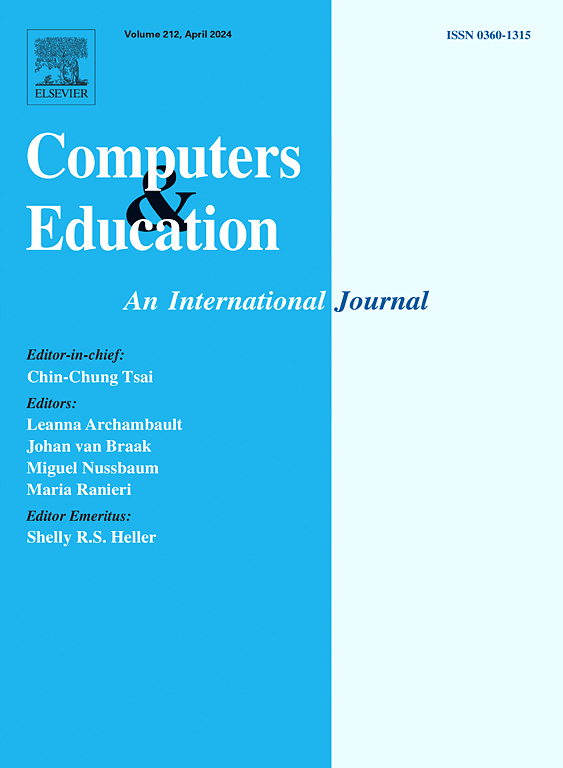关于参与在自动反馈有效性中的作用:来自击键记录的见解
IF 10.5
1区 教育学
Q1 COMPUTER SCIENCE, INTERDISCIPLINARY APPLICATIONS
引用次数: 0
摘要
反馈研究越来越关注学习者参与反馈过程的作用。基于技术的学习环境中反映写作行为的过程测量可以通过使参与可见,为反馈有效性的潜在机制提供新的见解。以往的研究表明,日志数据和相似性测量介导了自动反馈对学习者复习成绩的影响。在本研究中,我们的目标是复制和扩展以前的研究,使用从击键日志中获得的方法,在更细粒度的层面上代表修改过程。我们将行为参与度(即按键次数和打字时间)和书写停顿视为认知参与度的潜在指标。在一项课堂实验中,N = 453名英语作为外语的学习者(Mage = 16.11)完成了一项写作任务并修改了他们的草稿,他们要么收到了由大型语言模型(即GPT 3.5 Turbo)生成的反馈,要么没有收到反馈。第二个写作任务作为转移任务。所有文本都被自动评分以评估表现。自动反馈对学习者复习和迁移绩效的影响是通过文本复习过程中不同的行为投入指标来中介的,但自动反馈对迁移任务的直接影响并不显著。我们发现反馈对暂停长度和暂停次数的影响很小,但间接影响并不显著。该研究为学习参与在反馈有效性中的作用提供了进一步的证据,并说明了如何使用在线测量(即,击键记录)来获得对自动反馈有效性的新见解。讨论了使用不同的过程度量来评估学习投入。本文章由计算机程序翻译,如有差异,请以英文原文为准。
On the role of engagement in automated feedback effectiveness: Insights from keystroke logging
Feedback research increasingly focuses on the role of learners’ engagement in the feedback process. Process measures from technology-based learning environments that reflect writing behavior can provide new insights into the mechanisms underlying feedback effectiveness by making engagement visible. Previous research has shown that log data and similarity measures mediate the effects of automated feedback on learners’ revision performance. In the present study, we aimed to replicate and extend previous research using measures obtained from keystroke logging that represent the revision process on a more fine-grained level. We considered behavioral engagement (i.e., number of keystrokes and typing time) and writing pauses as potential indicators of cognitive engagement. In a classroom experiment, N = 453 English-as-a-foreign-language (EFL) learners (Mage = 16.11) completed a writing task and revised their draft, receiving either feedback generated by a large language model (i.e., GPT 3.5 Turbo) or no feedback. A second writing task served as a transfer task. All texts were scored automatically to assess performance. The effect of automated feedback on learners’ revision and transfer performance was mediated through the different indicators of behavioral engagement during the text revision, although the direct effect of automated feedback on the transfer task was not significant. We found small effects of feedback on pause length and the number of pauses, but the indirect effects were not significant. The study provides further evidence on the role of learning engagement in feedback effectiveness and illustrates how online measures (i.e., keystroke logging) can be used to gain new insights into the effectiveness of automated feedback. The use of different process measures to assess learning engagement is discussed.
求助全文
通过发布文献求助,成功后即可免费获取论文全文。
去求助
来源期刊

Computers & Education
工程技术-计算机:跨学科应用
CiteScore
27.10
自引率
5.80%
发文量
204
审稿时长
42 days
期刊介绍:
Computers & Education seeks to advance understanding of how digital technology can improve education by publishing high-quality research that expands both theory and practice. The journal welcomes research papers exploring the pedagogical applications of digital technology, with a focus broad enough to appeal to the wider education community.
 求助内容:
求助内容: 应助结果提醒方式:
应助结果提醒方式:


